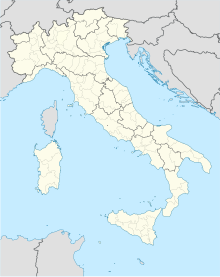
Paestum was a major ancient Greek city on the coast of the Tyrrhenian Sea in Magna Graecia. The ruins of Paestum are famous for their three ancient Greek temples in the Doric order, dating from about 550 to 450 BC, which are in an excellent state of preservation. The city walls and amphitheatre are largely intact, and the bottom of the walls of many other structures remain, as well as paved roads. The site is open to the public, and there is a modern national museum within it, which also contains the finds from the associated Greek site of Foce del Sele.

The Province of Salerno is a province in the Campania region of Italy.
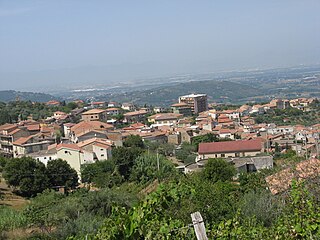
Albanella is a town and comune in the province of Salerno in the Campania region of south-western Italy. It is located 51 kilometers from the city of Salerno.

Aquara is a town and comune in the province of Salerno in the Campania region of south-western Italy.

Castelcivita is a town and comune in the province of Salerno in the Campania region of south-western Italy.
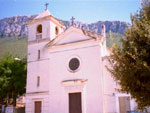
Controne is a town and comune in the province of Salerno in the Campania region of south-western Italy.

Ogliastro Cilento is a town and comune in the province of Salerno in the Campania region of south-western Italy. As of 2011 its population was of 2,241.

Ottati is a town and comune in the province of Salerno in the Campania region of south-west Italy. As of 2011 its population was of 680.
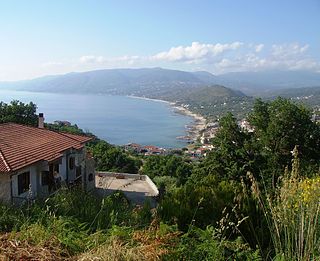
Palinuro is an Italian small town, the most populated civil parish (frazione) of Centola, Province of Salerno, in the Campania region. The name of the town is derived from Palinurus, the helmsman of Aeneas, as recorded in the fifth and sixth books of the Aeneid.
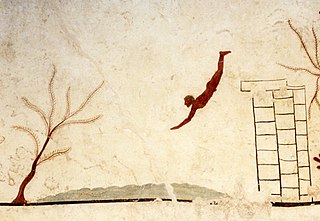
The Tomb of the Diver is an archaeological monument, built in about 470 BC and found by the Italian archaeologist Mario Napoli on 3 June 1968 during his excavation of a small necropolis about 1.5 km south of the Greek city of Paestum in Magna Graecia, in what is now southern Italy. The tomb is now displayed in the museum at Paestum.

Cilento, Vallo di Diano and Alburni National Park is an Italian national park in the Province of Salerno, in Campania in southern Italy. It includes much of the Cilento, the Vallo di Diano and the Monti Alburni. It was founded in 1991, and was formerly known as the Parco Nazionale del Cilento e Vallo di Diano.

The Salerno - Costa d'Amalfi Airport, located in the municipality of Pontecagnano Faiano and close to Bellizzi, is an airport in southern Italy, in Salerno city and the west coastal areas of Amalfi to the north and Cilento to the south. It is also commonly known as Salerno-Pontecagnano Airport.
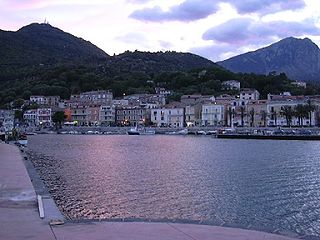
Scario is an Italian village and hamlet (frazione), the largest of the municipality of San Giovanni a Piro in the province of Salerno, Campania region. In 2011, it had a population of 1,124.

The Pertosa Caves, co-officially named Pertosa-Auletta Caves since 2012, are a karst show cave system located in the municipality of Pertosa, in the province of Salerno, Campania, Italy.

Paestum Airfield is an abandoned World War II military airfield in Italy, located approximately 9 km north-northeast of Agropoli, in the province of Salerno, in the Campania region of Italy.

Škocjan Caves is a cave system in Slovenia. Due to its exceptional significance, Škocjan Caves was entered on UNESCO’s list of natural and cultural world heritage sites in 1986. International scientific circles have thus acknowledged the importance of the caves as one of the natural treasures of planet Earth. Ranking among the most important caves in the world, Škocjan Caves represents the most significant underground phenomena both on the Karst Plateau and in Slovenia. Following independence from Yugoslavia in 1991, Slovenia committed itself to actively protecting the Škocjan Caves area and established Škocjan Caves Regional Park and its managing authority, the Škocjan Caves Park Public Service Agency.

The Alburni are an Italian mountain range of the Province of Salerno, Campania, part of the Apennines. Due to their geomorphology, they are popularly known as the "Dolomites of Campania" or of Southern Italy. The highest mountain is the Panormo. Its second name, Alburno, gives the name to the whole range.
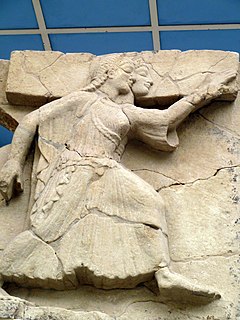
The Heraion at Foce del Sele is an archaeological site consisting of an Ancient Greek sanctuary complex dedicated to the goddess Hera in Magna Grecia. It was originally located at the mouth of the Sele, about 8 km (5.0 mi) north of the Greek city of Poseidonia, famous for its three standing Greek temples, but is now about 2.3 km (1.4 mi) from the modern coast as a result of the deposition of alluvial sediment by the river. The site is in the modern commune of Capaccio-Paestum, some 80 km (50 mi) south of Naples.

Laura is a southern Italian village and hamlet (frazione) of Capaccio, a municipality in the province of Salerno, Campania. As of 2001 its population was of 1,301.

